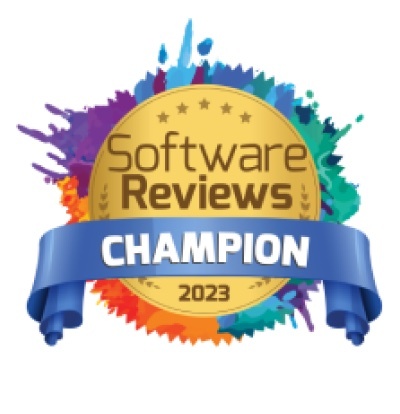How can you save your organizational data management and hosting cost using automated data lineage.
Do you think you did everything already to save organizational data management costs? Well, you probably haven’t done this yet!
What kind of costs organization has that data lineage can help with?
Data lineage can help large organizations reduce costs across various areas. Here are some common cost areas where data lineage can be beneficial:
- Infrastructure and storage costs: Data lineage allows organizations to understand data usage patterns, access frequencies, and data dependencies. By analyzing this information, organizations can optimize their infrastructure and storage strategies, avoiding unnecessary storage costs and efficiently allocating resources based on data usage patterns.
- Data integration and ETL costs: Large organizations often deal with complex data integration and Extract, Transform, Load (ETL) processes. Data lineage helps identify redundant or inefficient data integration steps, allowing organizations to streamline their processes and reduce development, maintenance, and operational costs associated with ETL.
- Data quality costs: Poor data quality can result in significant costs for organizations. Data lineage helps trace data quality issues back to their source, enabling organizations to identify the responsible processes or systems. By addressing these issues at their root, organizations can reduce costs associated with data cleansing, error correction, and rework caused by poor data quality.
- Compliance and regulatory costs: Compliance with data regulations is essential for large organizations, and non-compliance can result in substantial penalties. Data lineage provides transparency into data flows, transformations, and access, supporting organizations in demonstrating compliance and reducing the risk of costly violations.
- Analytics and reporting costs: Data lineage facilitates data discovery and understanding of data sources, transformations, and calculations. By empowering data analysts and business users with self-service analytics capabilities through data lineage, organizations can reduce the time and effort spent on data exploration, preparation, and reporting, leading to cost savings.
- Impact analysis costs: When making changes to data sources, structures, or processes, organizations need to understand the downstream impact. Data lineage enables impact analysis by tracing the flow of data and identifying the systems, reports, or applications affected by changes. By conducting thorough impact analysis, organizations can mitigate the risks of costly errors and minimize the associated costs.
- Operational and support costs: Data lineage provides insights into data dependencies and the relationships between different systems or processes. This information helps organizations troubleshoot issues, identify bottlenecks, and optimize performance. By resolving issues more efficiently and reducing downtime, organizations can lower operational and support costs.
It’s important to note that the specific cost areas where data lineage can help will vary depending on the organization’s industry, data landscape, and specific challenges. Conducting a thorough assessment of the organization’s data ecosystem and understanding its pain points will help identify the areas where data lineage can provide the most significant cost reduction opportunities.
How Data Lineage helps to save cost?
Data lineage can help organizations reduce costs by providing valuable insights into the origin, movement, and transformation of data throughout its lifecycle. Here are some ways to leverage data lineage to reduce costs:
- Identify unnecessary data processes: Data lineage allows you to trace the path of data from its source to its destination, enabling you to identify redundant or unnecessary data processes. By eliminating these redundant processes, you can reduce resource consumption and associated costs.
- Optimize data storage: Data lineage helps you understand which datasets are frequently accessed and which ones are seldom used. By analyzing this information, you can optimize your data storage strategies, such as implementing tiered storage or archiving infrequently accessed data. This approach helps reduce storage costs by allocating resources more efficiently.
- Identify data quality issues: Poor data quality can lead to increased costs due to errors, rework, and inefficiencies. By leveraging data lineage, you can track the origin of data quality issues, identify the responsible processes or systems, and take corrective actions. Improving data quality reduces the need for data cleansing and error correction, leading to cost savings.
- Streamline data integration processes: Data lineage enables you to understand how different data sources are integrated into your systems. By analyzing the lineage, you can identify complex and inefficient data integration processes. Simplifying and streamlining these processes can reduce development, maintenance, and operational costs.
- Enhance data governance: Data lineage provides transparency into data flows, transformations, and dependencies, supporting robust data governance practices. Effective data governance ensures compliance with regulations, reduces the risk of data breaches or non-compliance penalties, and avoids associated costs.
- Support impact analysis: Data lineage helps you understand how changes in data sources, structures, or processes impact downstream systems and applications. By conducting impact analysis, you can identify potential risks, assess the cost implications of changes, and make informed decisions, thereby minimizing the chances of costly errors.
- Facilitate data discovery and self-service analytics: Data lineage helps data consumers easily discover relevant datasets and understand their lineage. By empowering users to explore and access data independently, you can reduce the time and effort spent by data engineers or analysts in fulfilling data requests, leading to cost savings.
Remember that leveraging data lineage effectively requires proper data governance, documentation, and tools for capturing and visualizing lineage information. It is also crucial to regularly review and update the lineage information as data and processes evolve over time.







